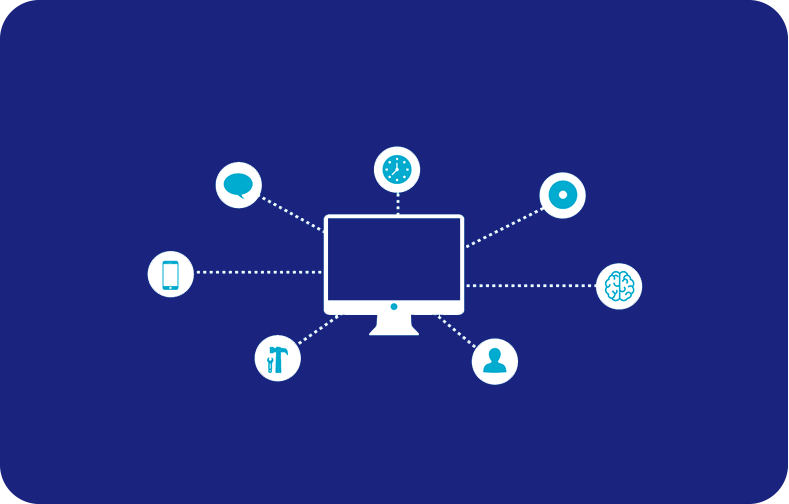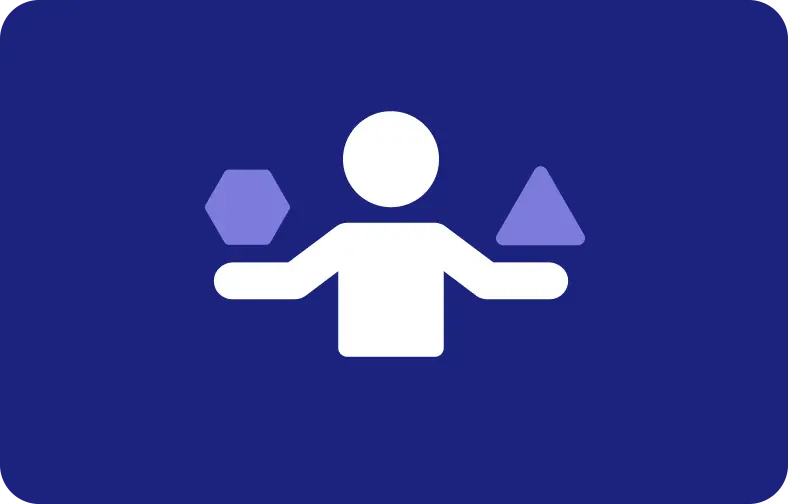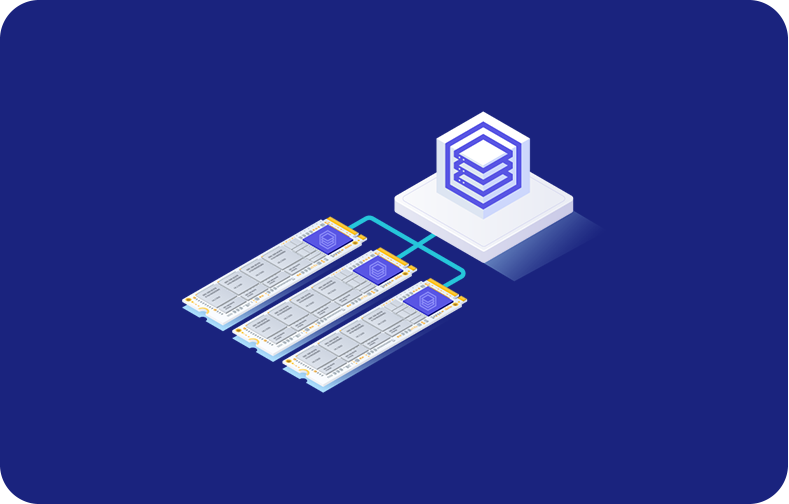Seamless Content Management with Directus

Directus is the leading headless content management solution for modern developers and companies. It unlocks the power of data like never before. Put an end to limiting templates and welcome the freedom to structure and access your content as you like. It makes it easy to handle complicated databases of any size and to integrate with the front-end technologies you prefer. When creating interactive digital experiences, you'll never have more power, flexibility, or scalability. Step right up to Directus, the content management system of tomorrow.
Understanding Directus API

Directus is an instant REST, intuitive, no-code data collaboration application for SQL databases that lets developers and content creators manage SQL database content efficiently, free from the limitations of conventional CMS systems. Directus can be deployed on any server that meets the system requirements, including a Virtual Private Server (VPS).
The service offered by vpsserver.com that can be used with Directus is our VPS Hosting. You can install Directus on one of our VPS plans and use it to manage SQL database content.
Directus offers unrivalled freedom in content structure, access, and presentation across platforms and devices by decoupling the content management interface from the presentation layer, making it different from standard CMS solutions.

With its clean and straightforward interface, Directus makes content management a breeze by serving as a central hub for organizing and retrieving database-stored content. While content editors benefit from a streamlined editing experience emphasizing efficiency and simplicity, developers with Directus can build custom database schemas tailored to their project needs. Directus makes it easy for teams to construct dynamic and engaging digital experiences by streamlining the content management process. This includes websites, mobile apps, and custom applications.
Directus Architecture

The scalable and adaptable architecture of Directus allows it to meet the needs of various projects and development settings. It conforms to the tech stack supporting SQL database vendors and schema, all auth providers, REST and GraphQL APIs, and file storage. Developers have unprecedented freedom and flexibility with Directus because it takes a headless CMS approach, which separates content management from content presentation.
The Headless CMS Architecture

Among Directus's core principles is the idea of a headless architecture. Directus allows developers to use their chosen front-end frameworks, technologies, and platforms by separating the content management interface from the presentation layer. Websites, mobile apps, and bespoke applications are just a few channels that might benefit from this architecture's ability to support customizable and dynamic digital experiences.
The Backend Components
Several backend components make up Directus, and they all cooperate to manage and distribute content efficiently. Among these parts are:
Database
Directus supports various database systems, including MySQL, PostgreSQL, SQLite, and Microsoft SQL database. Thanks to this flexibility, developers can choose the data source that best meets their project needs and infrastructure architecture.
API Layer

In Directus, the API layer is the main access point for content. It allows developers to programmatically create, update, delete, and query content through its RESTful and GraphQL APIs.
Realtime Module
Clients linked to the Directus API can use realtime updates and data synchronisation made possible by the Realtime module. Because of this, any time you edit content, it will update instantly across all devices and platforms.
The Front-end Components
Front-end components are available in Directus to help with content management and user interaction. However, the main focus is on backend operations. Among these parts are:
Admin Interface
The admin interface of Directus is designed to be both clean and straightforward, allowing administrators and content editors to manage content, settings, and user permissions easily. The admin app interface can be customized to fit the specific needs of organizations in terms of workflow and branding.
You can keep your data secure by creating unlimited permissions and roles to provide the access that non-technical users need. You can add custom validation, filter rules, IP allow-lists, field-level permissions, and configurable public access.
Applications for the client
Front-end frameworks like Angular, React, or Vue.js allow developers to create applications for the client. These client applications communicate with the Directus API to retrieve and display content, giving non-technical users unified digital experiences.
Personalization and Flexibility

The customization and extensible features of Directus are two of its main advantages. Developers can customize Directus to fit their projects' requirements by adding new features through plugins, hooks, and extensions. Aside from that, Directus provides strong support for user roles, permissions, authentication methods, custom data models, and scalable content management solutions.
Features Offered by Directus
To help developers and content creators manage and deliver dynamic digital experiences efficiently, Directus offers a broad collection of functions. Directus has several important aspects, such as:
Headless Architecture
Developers can use any front-end technology since Headless Architecture Directus divides content management and presentation.
Adaptable Technology Suite

To meet the needs of their projects and work with the current infrastructure, developers have the freedom to choose their technology stack. This includes database systems, backend languages, and front-end frameworks.
Data Modelling with Flexibility
Directus gives developers fine-grained control over data structure and relationships by letting them design custom database schemas that are tailored to their project needs.
Updates in Realtime
Updates to content are immediately reflected across all platforms with Directus Realtime since it allows for realtime updates and data synchronization between the Directus API and connected clients.
GraphQL APIs and Instant Rest

As an additional, sophisticated, and versatile option for data access, it provides easy-to-use REST and GraphQL APIs for data querying and manipulation in addition to its REST API.
Controlling User Access and Permissions
Granular user permissions and access restrictions, such as custom validation, field-level permissions, IP allow lists, and data methods, can be defined by administrators in Directus to ensure data security and compliance.

Authentication
Uploading, organising, and managing files and media assets is a breeze with Directus's robust file storage and management features.
User-friendly Interface
Directus ensures that user authentication procedures are secure by supporting a variety of techniques. However, Directus Cloud allows you to create projects hosted by the Directus team within no time, offering service usage quotas, including unlimited users and API requests.
Adaptable User Interfaces
The user interface of Directus is designed to be elegant and straightforward, making it easy to use for content management activities. It may be customized to fit the needs of individual projects and user preferences.
Adaptable and Versatile
With an extensible architecture and support for custom plugins and extensions, Directus is made to adapt to the needs of expanding projects and organisations.
How to Get Started with Directus?

To get started with Directus, you must follow the following phases:
Launching an Unveiling
Directus makes it easy to set up a new project. Here are the necessary steps to begin:
Installation
Directus can be installed on a server or locally on a workstation, utilizing virtualization technologies such as Docker or Vagrant. On their website, Directus offers comprehensive installation instructions for various situations.
Project Initialization
After installing Directus, open your terminal and type in the command to begin a new project. When you do this, a new directory for your Directus project will be created along with all the required files and settings.
Configuration
Directus comes with a configuration file that you can use to set up the programme. In it, you can enter details like the database connection, the server port, and the default credentials for the admin account. The project can be customized by updating this file with your configurations.
Authentication and Database Configuration

To make sure your Directus project is secure and works as expected, you must configure the authentication settings and database:
Authentication Methods
Email and password authentication, Open Identity 2.0, and JSON Web Tokens (JWT) are just a few of the authentication options offered by Directus. You can configure Directus's authentication method in the admin interface or configuration file according to your project's needs.
Content Creation and Management

You can begin generating and managing content after your Directus project is established and set up:
Interface
Using the Directus admin interface, accessible through any web browser, you may manage content, establish fields, and create collections. Administrators and content editors will appreciate the intuitive design of the admin interface, which allows for seamless project management tasks.
Collections
Take advantage of collections to categorize your project's articles, goods, and users, among other content. By defining its fields, you can specify the data type (text, integers, dates, files, etc.) for each collection.
Management
Adding, editing, and deleting content from your collections is done through the administrative interface. The content management process can be simplified with Directus's tools for managing content changes, versioning, and workflows.
Front-end Technology Integration with Directus

Get content from your Directus project and display it in your web applications with the help of front-end technologies and Directus:
API Access
You can access data from your project using Directus's RESTful API or GraphQL API. Use API endpoints to programmatically interact with your project, access content, and execute CRUD activities.
Front-end Frameworks
Popular front-end frameworks like React, Vue.js, or Angular can be integrated with Directus to create interactive and dynamic web applications. To retrieve data from the Directus API, your application can use libraries such as Axios or Apollo Client to send HTTP requests.
Security
Make it possible for non-technical users to log in and access restricted content by implementing authentication in your front-end application. Regarding user authentication and application security, Directus has you covered with solutions like JWT and email/password authentication.
Here you go!
Frequently Asked Questions
Tell me about Directus and how it changes things compared to other content management systems?
With its unique separation of the CMS interface and the presentation layer, Directus provides unrivalled customization and flexibility as a headless content management system (CMS). Unlike conventional CMS platforms, developers can define custom tech stacks and database schemas.
How are data synchronization and realtime changes managed by Directus?
To ensure that any changes to content are immediately reflected across all platforms, Directus Realtime allows for realtime updates and data synchronisation between the Directus API and linked clients.
Regarding data searching and manipulation, does Directus support GraphQL APIs?
Directus does provide GraphQL APIs in addition to its RESTful API. This gives developers more options when it comes to querying and altering data.
Is it possible for Directus to filter API access using IP-allow lists?
You have it right. To restrict who can use the application programming interface (API), administrators can create IP-allow lists in Directus. This ensures that only authorised users and systems are able to access the platform.
When it comes to the management of permissions at the field level, how does Directus handle the control of access to sensitive data?
It is possible for administrators to define rights for individual fields within a database using Directus. These permissions can either allow or prevent access to the fields based on the user roles and permissions.
If you could perhaps clarify what "headless CMS" is and how Directus is connected to this concept, I would really appreciate it.
By separating the interface to manage content from the presentation layer, a headless content management system (CMS) like Directus enables developers to create digital experiences that are dynamic and adaptive by utilising their preferred front-end technologies.
What is the process for launching a new project in Directus?
Create a new project in the Directus interface, define your database schema, set up authentication settings, and start contributing content to start a new project.
Directus supports various types of databases for content storage.
Directus's support gives the ability to choose the correct database for each project for many databases, including MySQL, PostgreSQL, SQLite, and Microsoft SQL Server.
Are there any authentication mechanisms that Directus supports for managing user access?
Admins may enforce safe user authentication protocols with Directus' support for many ways of authentication, such as email/password authentication, OAuth 2.0, JWT (JSON Web Tokens), and more.
How does Directus allow me to create and manage user accounts?
Administrators can create and manage user accounts within the Directus interface. They can give roles and permissions to govern access to projects, files, and content.











